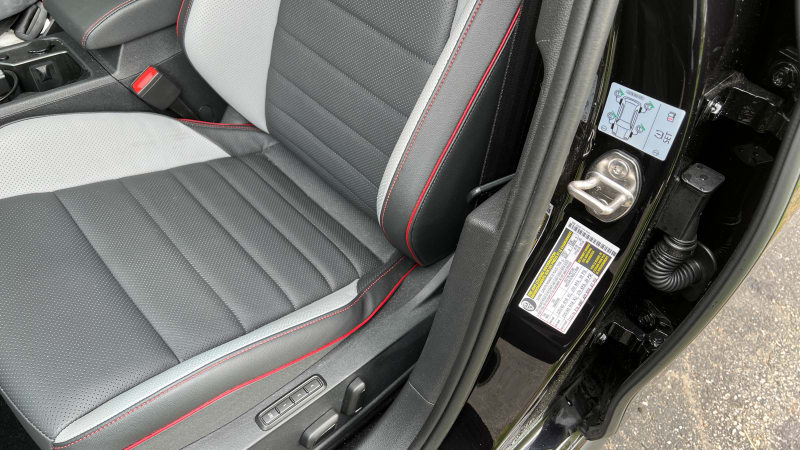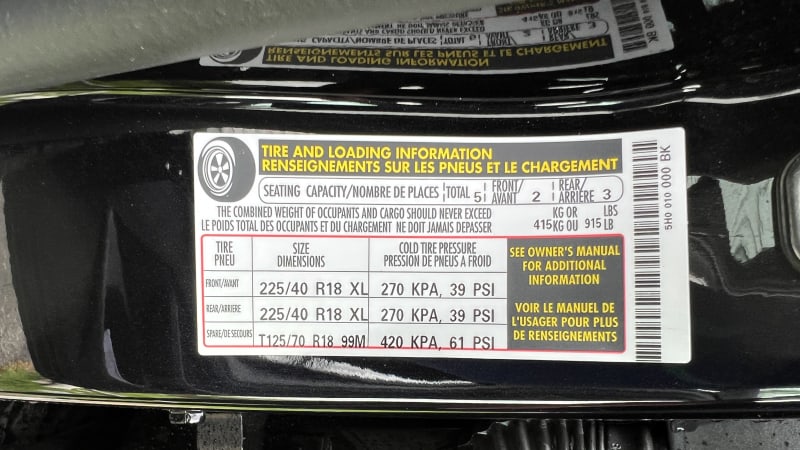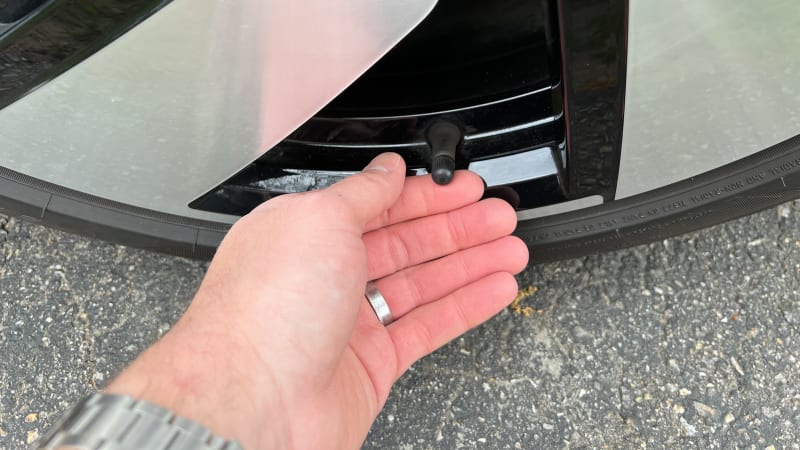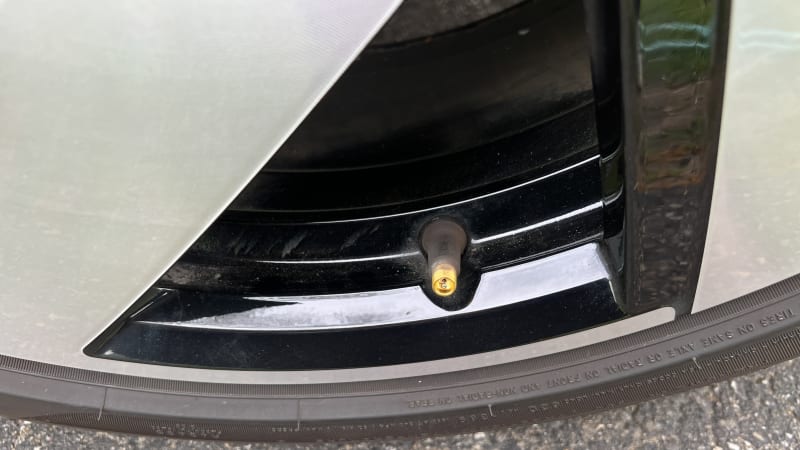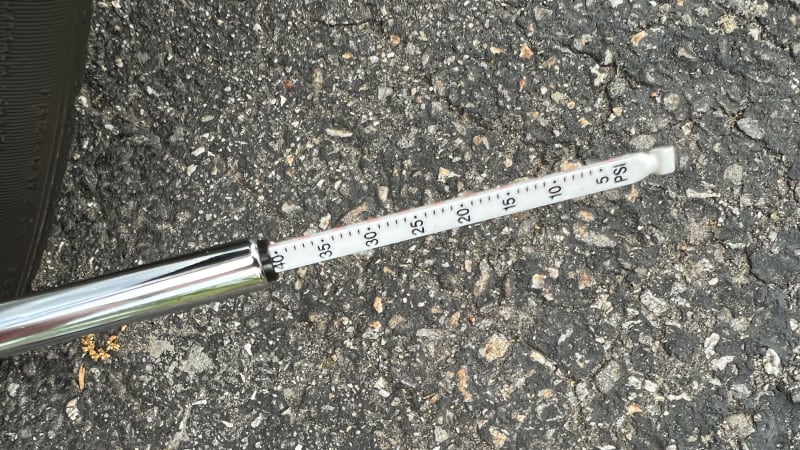Car maintenance can be a stressful and daunting idea for many people, but there are several basic tasks that almost anyone can handle. Since your tires are the only part of your car designed to touch the road, it’s good not to ignore the upkeep. Checking tire air pressures is one of the easiest things you can do, but it’s also vitally important. Though easy, you should know a few things about checking tire air pressure, so let’s take a closer look.
What should my tire pressure be?
Most newer vehicles show recommended tire pressure on a sticker inside the front door jamb. Automakers list recommended pressures for a cold tire, so you must measure the pressure when the vehicle has been sitting for a while to ensure that you’re filling to the right level. Pressures are listed in pounds per square inch, or psi.
Read more: Tire sizes and ratings: What do letters and numbers mean?
Some cars, especially older models, may have the sticker placed somewhere else (check the fuel filler door) or not have the sticker at all. In these cases, the owner’s manual is the best resource for tire pressures, but you still have options if you don’t have one. You can call your dealer or tire shop to get the recommended pressures or consult one of several online sources to find the information.
How to check tire pressure
While there’s little danger in checking your tire air pressure, you’ll want to make sure to park the car away from traffic and on a level surface, if possible. A garage or driveway would be ideal, but a quiet parking lot will do the trick. It’s also good to check your tires when they’re cold, as the manufacturer’s recommended pressures are listed for cold tires.
Read more: Wheel alignment and balancing: What you need to know
Once your car is safely parked, remove the valve stem cap on one tire and firmly press your gauge into the stem. You may hear a little air escape before the gauge shows a reading, but you won’t need to worry about losing too much air unless you hold the gauge there for an extended period.
Note the air pressure. Add or remove air to reach the recommended level. You can release air by pressing on the small stem in the middle of the filler valve. Make sure to replace the cap when you are finished. Repeat the process for the remaining tires.
When to check tire pressure
While it’s best to check your pressures when the tires are cold, that’s not always an option. As you drive, the friction from the road causes the tires to heat up, and the air inside expands as that happens. Hot tires frequently show higher air pressures than cold, so it’s important not to go crazy removing air from a hot tire, as you can easily take too much.
Read more: Why winter tires are worth it
You should also visually inspect your tires while filling them. Tires can naturally lose air over time, but a puncture or other damage can accelerate the process. Check the air pressure and fill all tires to their recommended levels if you suspect damage. Retest a day or two later to determine if there’s a leak. Many punctures and other damage can be repaired with a patch, but sometimes the hole is too big or is located on the sidewall, where patches cannot be applied.
Read more: Five things you should know about a spare tire
Types of tire pressure gauges
We have gathered some of the most popular tire pressure gauges on the online marketplace that will help maintain road safety protocols and optimal fuel consumption. On this list, you will find analog and digital gauges so you can find the tool that best fits your needs and budget.
Analog gauges
The air pressure gauges that most people are familiar with are handheld manual units with simple pop-up indicators. While these don’t deliver a digital gauge’s precision or convenience, they are completely fine for reading tire pressures. Just remember that you probably won’t be able to get a precise readout of the tire pressure.
Digital gauges
Digital tire pressure gauges are more accurate than analog pressure gauges and come in various sizes, shapes, and price ranges. There are a variety of handheld digital gauges that fit easily in a glove box or center console storage area, and many display tire air pressure down to the tenth of a psi. That makes them great for when you need to dial in specific tire pressure for off-roading or motorsport. Of course, as inexpensive electronic devices, they are known to stop working. There’s a reason analog gauges are still around.
Frequently asked questions:
- How frequently should you check your tires? Popular tire manufacturer Bridgestone suggests checking your tire pressure monthly.
- What PSI should my tires be? Each vehicle will have a manufacturer-recommended tire pressure. As we lay out above, you’ll need to either locate the label inside the front door jam or in your car’s owner’s manual. Most tires will also have a maximum PSI that’s usually found on the side of the tire itself.
- How long can you drive with low tire pressure? You really shouldn’t. Both over-inflated and under-inflated tires are dangerous to drive on. Improper pressure will also prematurely wear a tire out, necessitating costly replacement.
Related video:

